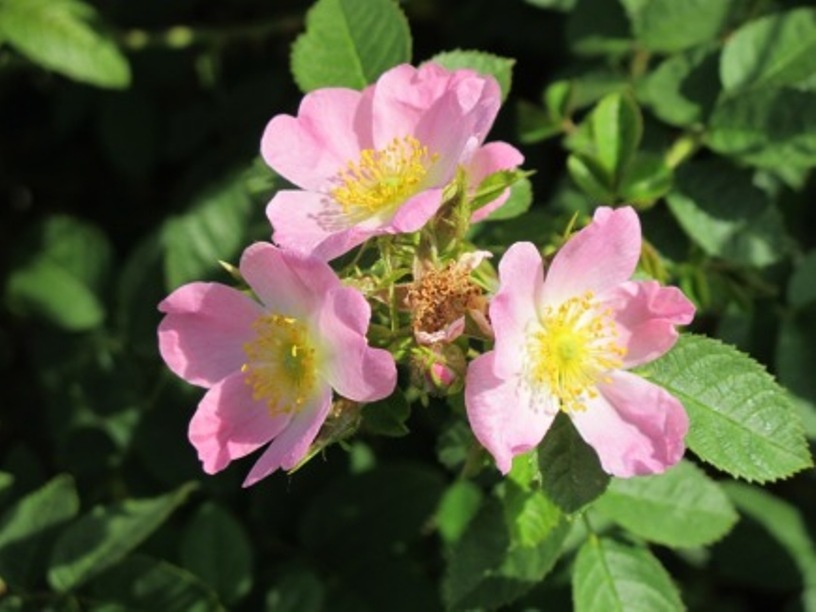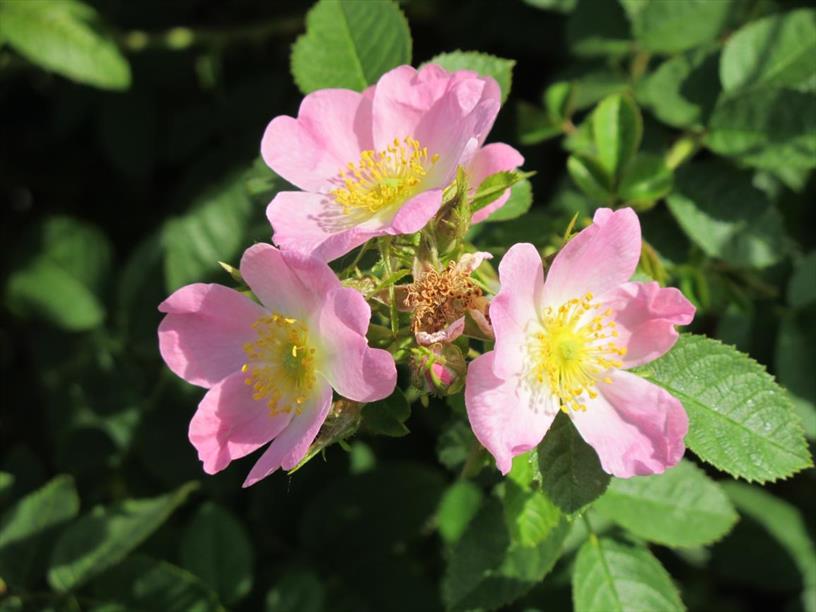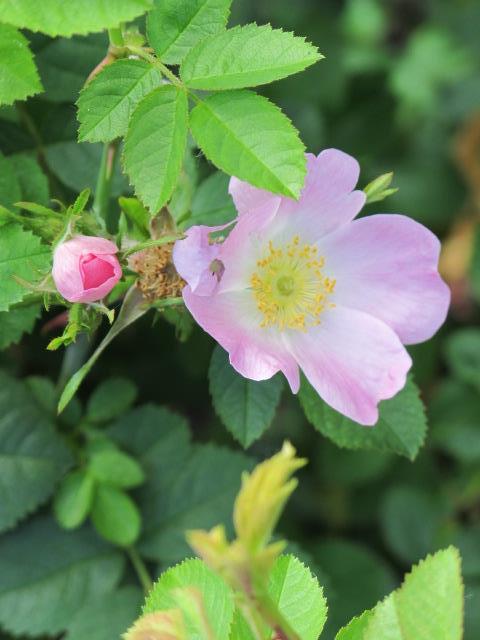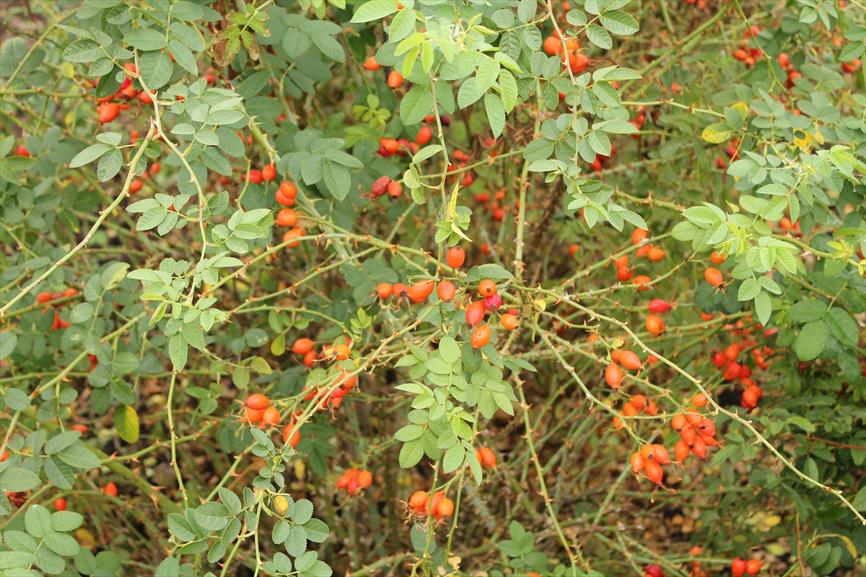Sweet-briar
Rosa rubiginosa
Rose family (Rosaceae)
The rose apple
For centuries Rosa rubiginosa has been called eglantine or sweet briar. The natural distribution of this rose is across the whole of Europe to the Caucasus. In the Netherlands, its natural sites are located mainly in South Limburg. In the past this rose was often planted for naturalizing, e.g. to stabilise sand movement in dunes. In calcareous dunes sweet briar is relatively common. It was also popular when designing castle gardens and as a hedge.
A characteristic of this rose is the glands on the petioles that gives this rose its apple fragrance. This is released when the foliage is wet, or if you rub the leaves between your fingers.
Themes
Crown jewel in the Historic Garden of Aalsmeer.
The fruit can be cooked and used to make jellies etc.; they taste is best if the fruit has been frosted. There is only a thin layer of flesh surrounding the many seeds; a pleasant tasting fruity-flavoured tea is made from the rose hips, which are rich in vitamin C. The petals are often used, either raw or cooked in confectionery after the bitter, white base of each flower petal has been removed. Young shoots, as they emerge from the ground in spring, can be eaten raw. The seed is a good source of vitamin E, it can be ground into a powder and mixed with flour or added to other foods as a supplement - be sure to remove the seed hairs first.
The flowers and hips are aperient (relieves constipation), astringent (contracts skin cells and body tissue) and assists digestion. An infusion of dried petals can be used to treat headaches and dizziness, with added honey the infusion is used as a heart and nerve tonic and as a blood purifier. The seed is rich in vitamin E and an oil extracted from the seed is used externally in the treatment of burns, scars and wrinkles. The fruit of many members of this genus is a rich source of vitamins and minerals, especially in vitamins A, C and E, flavanoids and other bioactive compounds. It is also a good source of essential fatty acids. It is being investigated as a food capable of reducing the incidence of cancer and also as a means of halting or reversing the growth of cancers.
There is a layer of hairs around the seeds just beneath the flesh of the fruit. These hairs can cause irritation to the mouth and digestive tract if ingested.
Details
| Description: | Shrub, 60-200 cm; arching and with prickly stems. |
|---|---|
| Distributions: | Europe |
| Habitat: | Hedges, thickets, forest edges, coastal dunes, gravel beaches, roadside verges, raised sandy floodplains and limestone slopes |
| Year cycle: | Perennial (polycarpic decidous) |
| Hardiness: | Colder than -4 f (very hardy) |
| Flowering period: | Juni - augustus |
| Flower color: | Pink |
| Notes on flowers: | Single, cup-shaped, light pink flowers. |
| Fruiting period: | September - oktober |
| Fruit color: | Orange, red |
| Notes on fruits: | Fruit a false fruit - the scarlet hips are spherical to ovate, sometimes covered with stalked glands; on top of the hip is usually a ring of sepals. |
| At its best: | Juni - oktober |



